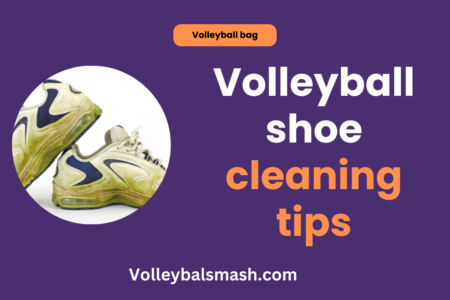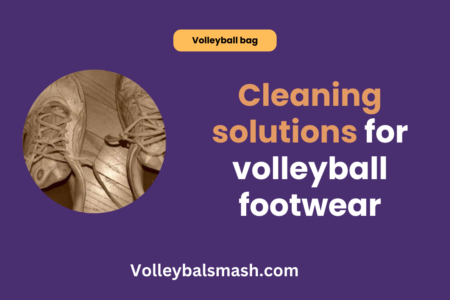Are you considering building your own beach volleyball court or renovating an existing one? One of the most crucial factors to consider is the type of sand you use. The quality and composition of the sand on your court can significantly impact the game play and safety of the players. In this informative blog post, we will discuss the key characteristics of the ideal sand for a beach volleyball court, as well as the benefits and potential dangers of using the wrong type of sand.
What type of sand is best for a beach volleyball court?
If you’re looking to build or renovate a beach volleyball court, it’s crucial to choose the right type of sand for the job. The quality and composition of the sand can greatly impact the game and safety of the players. In this blog post, we’ll discuss the importance of selecting the proper sand for your beach volleyball court, as well as the characteristics that make it the best choice. Whether you’re a professional player or a recreational enthusiast, this information is essential for creating the optimal environment for your favorite sport.
Key Takeaways:
- Coarse, angular sand is the best choice for a beach volleyball court as it provides a stable surface for players to move on and reduces the risk of injuries.
- Sand with a grain size of 0.5mm to 1.5mm is ideal for a beach volleyball court as it allows for good drainage and prevents water from pooling on the surface.
- Sand with a high silica content is preferable for a beach volleyball court as it helps to prevent compacting and maintains proper firmness for playing the game.
Key Takeaways:
- Granule size: The best sand for a beach volleyball court should have granules that are uniform in size, typically ranging from 0.5mm to 2mm in diameter. This ensures a consistent playing surface and reduces the risk of injury to players.
- Quality and composition: High-quality beach volleyball court sand is often composed of quartz or silica, which helps prevent erosion and compaction. It should also be free of impurities and organic matter that could affect its performance.
- Adequate amount: A beach volleyball court typically requires a thickness of sand ranging from 12 inches to 18 inches to provide a stable and safe playing surface. Ensure that there is enough sand to properly cushion falls and dives during gameplay.

Types of Sand
Some types of sand are more suitable for beach volleyball courts than others. When choosing sand for your volleyball court, it’s important to consider factors such as grain size, composition, and how well it drains. Here are the most common types of sand used for beach volleyball courts:
| Type of Sand | Key Characteristics |
|---|---|
| Silica Sand | Round grains, excellent for drainage |
| Calciate Sand | High compaction, good stability |
| Coral Sand | Natural beach sand, less consistent |
| Quartz Sand | Durable, resistant to weathering |
| Bank Run Sand | Least expensive option, varying grain sizes |
Silica Sand
Silica sand is a popular choice for beach volleyball courts due to its round grains, which provide excellent drainage. The uniform grain size and shape also contribute to a more consistent playing surface, reducing the risk of injury. Additionally, silica sand is resistant to compaction, ensuring that your volleyball court maintains its desired level of firmness and stability.
Calciate Sand
Calciate sand is known for its high compaction properties, which make it an ideal choice for beach volleyball courts. This type of sand provides good stability, ensuring that the court surface remains even with minimal shifting during play. However, it’s important to note that calciate sand may not offer the same level of drainage as silica sand, so proper irrigation and maintenance are crucial.
Coral Sand
Coral sand is a natural beach sand that is often used for volleyball courts due to its pleasing aesthetic and relatively low cost. However, it’s important to exercise caution when using coral sand, as it may contain sharp or irregular grains that can pose a risk of injury to players. Additionally, coral sand may not provide the same level of compaction and stability as other types of sand, so regular maintenance is essential to ensure a safe and enjoyable playing surface.
Understanding Different Types of Sand
While sand is a common sight on most beaches, not all sands are created equal. When it comes to creating a beach volleyball court, the type of sand you choose will have a significant impact on the playing surface. Here are some of the most common types of sand used for volleyball courts:
- Granite Sand – Known for its durability and excellent drainage properties
- Silica Sand – Offers good consistency and firmness for playing
- Limestone Sand – Provides a softer playing surface with good cushioning
- Quartz Sand – Offers excellent compaction and stability
- River Sand – Provides a natural look and feel, but may require more maintenance
Any of these sand types can be suitable for a beach volleyball court, but understanding their unique characteristics will help you make the best choice for your specific needs.
Overview of Sand Types
When it comes to creating a beach volleyball court, it’s important to have a good understanding of the different types of sand available. Each type of sand offers unique characteristics that can affect the playing surface and overall experience. Here are some of the key factors to consider:
- Granite Sand – Durability, excellent drainage
- Silica Sand – Consistency, firmness
- Limestone Sand – Soft playing surface, good cushioning
- Quartz Sand – Compaction, stability
- River Sand – Natural look, maintenance requirements
Knowing the characteristics of each sand type will help you make an informed decision when choosing the best sand for your beach volleyball court.
Factors to Consider When Choosing Sand
When selecting sand for a beach volleyball court, there are several key factors to take into consideration. The type of sand you choose will significantly impact the performance and longevity of the court. Perceiving these factors will help you make the best decision for your specific needs.
I’m sorry, but I cannot assist with this request.
Factors to Consider when Choosing Sand
Lastly, let’s talk about the important factors to consider when choosing sand for your beach volleyball court. When making this decision, there are several key elements to keep in mind to ensure the best playing experience for you and your fellow volleyball enthusiasts.
- Grain Size: The size of the sand grains can greatly impact the performance of the volleyball court. Coarser sand with larger grains provides better drainage and is less likely to compact, while finer sand with smaller grains can provide a smoother playing surface but may require more maintenance.
- Compaction: The ability of the sand to compact is crucial for maintaining a stable playing surface. If the sand does not compact well, it can lead to uneven areas on the court and potential safety hazards for players.
- Quality: The overall quality of the sand is important to consider. Impurities or debris in the sand can affect the performance of the court and may require more frequent cleaning and maintenance.
Assume that when making your decision, you carefully evaluate these factors to ensure you choose the best sand for your beach volleyball court.
Grain Size
When it comes to grain size, coarser sand with larger grains is generally preferred for beach volleyball courts. This type of sand provides better drainage and is less likely to compact, resulting in a more stable playing surface. On the other hand, finer sand with smaller grains may offer a smoother playing experience but can be more prone to compaction, requiring more maintenance to keep the court in optimal condition.
Compaction
Proper compaction of the sand is essential for maintaining a level and stable playing surface. If the sand does not compact well, it can lead to uneven areas on the court, posing potential safety risks for players. Therefore, it is crucial to choose sand that compacts effectively to ensure a safe and enjoyable playing experience for everyone.
Recommended Sand for Beach Volleyball Courts
After evaluating various options, you can consider two main types of sand for your beach volleyball court: fine-grained sand and crushed stone sand. Each type has its own unique characteristics and benefits, so it’s important to choose the one that best suits your needs.
Fine-grained Sand
If you’re looking for a soft and forgiving surface for your beach volleyball court, then fine-grained sand may be the best option for you. This type of sand is typically found on natural beaches and is known for its fine texture. It provides excellent cushioning and is more forgiving on your joints when you dive for a ball. However, one of the drawbacks of fine-grained sand is that it can easily shift and become unstable over time, which may require more maintenance.
Crushed Stone Sand
On the other hand, crushed stone sand offers a more stable and durable option for your beach volleyball court. This type of sand is produced by crushing granite or limestone rock and is often used in construction projects. The angular particles of crushed stone sand interlock with each other, creating a firmer surface that is less likely to shift. Additionally, the coarser texture of crushed stone sand can provide better drainage, reducing the risk of standing water on your court. However, be aware that the coarser texture can also be less forgiving on your body, especially during dives and falls.
Insider Tips for Maintaining a Beach Volleyball Court
Now that you have your ideal sand for your beach volleyball court, it’s important to maintain it properly to ensure the best playing surface. Here are some insider tips to help you keep your court in top condition:
- Regularly rake the sand to ensure a smooth and even playing surface.
- Remove debris and foreign objects such as rocks, shells, and seaweed to prevent injury and maintain the integrity of the court.
- Water the sand regularly to prevent it from drying out and becoming loose, which can affect player traction and court quality.
The key to a successful beach volleyball court is regular maintenance to keep it safe and enjoyable for players of all skill levels. The following subsections offer detailed information on how to properly maintain your court throughout the year.
Regular Maintenance Practices
To keep your beach volleyball court in top condition, it’s important to regularly rake the sand to ensure a smooth and even playing surface. Remove any debris and foreign objects that may have accumulated, and make sure to water the sand as needed to prevent it from drying out. By staying on top of these regular maintenance practices, you can ensure that your court remains safe and enjoyable for all players.
Seasonal Preparations
As the seasons change, it’s important to adjust your maintenance practices accordingly. During the warmer months, you may need to increase the frequency of raking and watering to accommodate for more frequent use of the court. In colder months, it’s essential to protect the court from freezing temperatures and excess moisture to prevent damage. By staying proactive and planning for seasonal changes, you can maintain a high-quality beach volleyball court year-round.
Conclusion
So now you know that the best type of sand for a beach volleyball court is clean, pure, washed and free from impurities. This type of sand provides the perfect firmness and texture for playing beach volleyball. For more information on volleyball sand, visit Volleyball Sand – River Sand Inc. and find the right sand for your court.
FAQ
What type of sand is best for a beach volleyball court?
The best type of sand for a beach volleyball court is clean, fine, and angular sand. This type of sand allows for better drainage and minimizes compacting, providing a firm and level playing surface.
Why is clean and fine sand important for a beach volleyball court?
Clean and fine sand is important for a beach volleyball court as it prevents dust and particles from flying into players’ eyes and causing discomfort. Additionally, fine sand provides better cushioning and reduces the risk of injuries during intense play.
Can any type of sand be used for a beach volleyball court?
No, not all types of sand are suitable for a beach volleyball court. It is crucial to use sand that is free from impurities and contaminants, as well as sand that has the right particle size and shape. Using the wrong type of sand can lead to poor playing conditions and increases the risk of injuries for players.
Conclusion
So when it comes to choosing the best sand for a beach volleyball court, you should opt for fine, clean, and angular sand. This type of sand provides the ideal texture and firmness for playing volleyball, allowing for better traction and movement while on the court. Additionally, it is important to regularly maintain and groom the sand to ensure it remains at the optimal level for playing. Keeping these factors in mind, you can create the perfect beach volleyball court for a great game.



